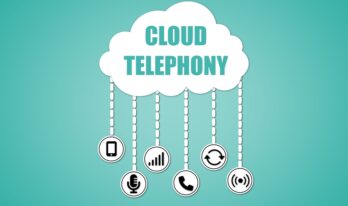Digital Asset Management tools should be an integral part of any business. Companies are going through a complete digital transformation and need to protect their digital assets.
Digital assets also need a good storage solution. Especially for businesses where images, videos, animations, etc. are an important aspect.
Hence, this article talks about digital asset management and the various tools for businesses.
Top 8 Digital Asset Management Tools for Businesses
What is a Digital Asset Management System?
Digital Asset Management tools upload, store, manage and organize digital assets. Moreover, it stores the files like images, videos, and other media at a central location to amplify their benefits. Hence, making the files more accessible anytime, anywhere and from any device.
Further, DAM tools ensure backup and sync features to secure and protect all media files. It also provides users administrative features. That is to say, the tools enable or disable access to specific files to authorized accounts. As a result, it automates and streamlines workflows by giving users complete control over the assets.
Types of Digital Asset Management Tools:
- Brand Asset Management System: It focuses on marketing and sales digital assets like product images, logos, and other marketing collateral.
- Library Asset Management System: It mainly stores and retrieves large sets of infrequently changing media assets.
- Production Asset Management System: It stores, organizes, and alters the control of digital assets that are frequently changing.
- Digital Supply Chain Services: This system focuses on the distribution of content, media, and marketing collateral to digital retailers.
How are Digital Asset Management tools used?
Digital Assets Management tools come in various shapes and sizes. Moreover, the tools can work with cloud or on-premise platforms. Hence, here are a few common functionalities to look for in your DAM tool:
- Firstly, it must upload files one at a time or in a bulk, depending on the user.
- It must also embed and assign metadata and categorize the files.
- Moreover, it allows users to search with advanced queries and filters.
- It must also send email links to registered and non-registered users for authentication.
- Further, it is easier to share and embed files to third-party platforms.
- It also schedules review dates for files when they need to retire or expire.
- It also manages authorization to edit files and alerts users. Hence it assigns permissions and determines user groups for various projects.
- Above all, it allows authorized users to access and edit files whenever required.
- Most importantly, it helps users to distinguish between approved files before downloading or sharing them.
Biggest Challenges of Digital Asset Management Tools
-
Integration with Other Tools:
Without integration, users need to manually switch between various assets in the organization. Therefore, it is an important challenge that businesses face when they invest in DAM. Additionally, Digital Asset management tools need to be integrated with different software and solutions.
However, DAM tools do integrate with other tools and platforms when businesses use APIs. Hence, DAM allows users and teams to communicate via other channels in the business model.
-
Standards in Usability:
Modern Digital Asset Management Solutions allow businesses to manage, share, edit and track files easily. Hence, it is important to provide access to the organization for a DAM solution to drive more productivity.
Although, there needs to be an admin assigned to work with the DAM solution. As a result, they would be responsible to manage the tool on a regular basis and in some cases even train and support multiple users.
-
Requirements for Metadata:
One of the best functions offered by Digital Asset Management tools is to organize assets by tagging them. Therefore, this function of tagging the assets is “Metadata” which makes assets easier to search.
Although, a DAM solution will not perform optimally if the assets are tagged poorly. Hence, it is important to invest time to plan keywords while generating assets. As a result, it will ensure the optimal performance of the solution.
-
Cost of Implementation:
There is a significant increase in the cost of DAM tools as the requirements of an organization increase as well. Moreover, there is a higher cost of replacing single digital assets. However, there are Digital Asset Management tools that reduce the cost of the data and asset management to enable scalability of the resources.
Benefits of Implementing Digital Asset Management Tools
-
Reducing the Cost of Lost or Misplaced Assets:
Businesses constantly keep creating newer content and assets in marketing. Although, it leads to more files and more possibilities of losing or misplacing them.
Hence, DAM tools help virtually store and secure the assets. Therefore, saving the costs on recreating the assets and making it easy to retrieve them.
-
Enhancing the Creative and Production Cycle:
Digital Asset Management tools provide an efficient and agile process of content creation. Moreover, it enables version controls, easy conversions, and approvals in the workflow that reduce the time spent on tasks. As a result, DAM solutions improve and optimize the creative process.
-
Eliminating Workflow Redundancies:
Digital Asset Management solutions provide a complete overview of the available content. Further, it also increases the value of assets by reusing and repurposing them.
It also enables easy collaborations between various teams. Therefore, reducing the possibilities of any miscommunications that may be an additional cost.
-
Streamlining the distribution:
One of the benefits of DAM solutions is sharing insights into a product’s development process. Further, allowing stakeholders, management, or other relevant participants to contribute ideas for the product.
Additionally, it streamlines the asset distribution process across an organization by providing access to anyone who has feedback to improve the product.
-
Maintain Brand Consistency and Integrity:
Digital Asset Management tools ensure consistency while using on-brand files among team members. Therefore, it directs them to a centralized content repository and avoids the usage of out-of-date or low-quality files. As a result, the use of such consistent content ensures coherent messaging of the brand reaches all customer touchpoints.
-
Access Authorization:
With governance features, DAM solutions offer administrators control over the users who interact with the assets. Therefore, limiting the access to confidential and sensitive content. As a result, restricting the download privileges on specific files to authorized users.
-
Improving the ROI to Support Business Growth:
Digital Asset Management tools offer analytical features and record the usage of assets. Moreover, the data helps comprehend system optimization and influence important decisions for content strategies.
Further, DAM tools provide scalable solutions. That is to say when the business expands, so do the digital benefits. As a result, providing businesses more control over digital assets.
Adobe Experience Manager Assets
Adobe Experience Manager Assets is one of the best Digital Asset Management tools to manage content and assets on a single platform. It also offers the speed of a cloud-native solution.
It also streamlines processes for collaboration between various teams. Hence, enabling marketers and creators to work more efficiently.
Key Features:
- It provides AI capabilities and data-driven insights.
- It also helps identify the content that attains high ROI.
- Moreover, it helps automate tedious processes.
- It also offers native connectivity across Adobe Creative Cloud apps and services.
Canto
Canto is also termed as the “Jack of all Trades” among Digital Management Tools. It is also one of the pioneers and has been providing powerful yet simple solutions for more than 25 years. As a result, Canto manages to excel in the user interface.
Moreover, it enables customization features for user access and adheres to digital rights management. Therefore adding another layer of security for digital assets.
Key Features:
- Canto offers a simple default search feature using progressive search solutions.
- It also provides filters, facial recognition features, and custom shared libraries.
- Moreover, it offers modern download options and visual previews.
- Above all, it secures digital assets by sharing and expiring links along with user permission features.
Bynder
Bynder offers the best Digital Asset Management tools for medium to large businesses. It is also a feature-rich solution with a great customer support team.
Furthermore, it also offers third-party integration support as it is a centralized solution. Moreover, it leverages AWS to manage and distribute digital content for scalability and performance.
Key Features:
- Bynder offers security controls in its solutions that include user rights and access controls.
- It also provides support for large file-type and monitors its import and export.
- Moreover, it provides an organizational interface for easy file preview and conversion.
- It also offers metadata, workflow, and digital rights management features.
Widen
Widen is an enterprise-class solution that provides more features than just a digital asset management tool. It incorporates other solutions like Marketing Resource Management, Brand Management, and Product Information Management.
Moreover, it provides world-class search functionality. Therefore, offering more attention to the metadata and its customization.
Key Features:
- It provides faster and more predictive search features that also depend on the aspects of the digital assets.
- It also offers automatic file conversions as well as shared links and embed codes.
- Moreover, it provides customization of the metadata and its categories.
MediaValet
MediaValet is one of the best Digital Asset Management tools for Marketing teams. Additionally, it provides auto-tagging features that enable an easier search for digital assets.
It offers an efficient file sorting system into categories and sub-categories. Moreover, it is an independent application available for Windows, Android, and iOS.
Key Features:
- It provides asset categorization features and a well-sorted library.
- It also offers features for faster and easier project reviews and approvals.
- Further, it provides a secure media sharing feature for digital asset protection.
- In addition, its organizational interface provides robust media and workflow management features.
Libris
Libris is a first-class DAM software that offers incredible customizable features. Although it is known as PhotoShelter after rebranding, Libris is still synonymous with the solution. Moreover, it has a very familiar and simple user interface to help first-time users.
Key Features:
- Its organizational interface offers incredible import and export features.
- It also provides easy-to-use search features.
- Moreover, it provides great asset categorization and customizable branding.
Amplifi.io
Amplifi.io is one of the most intuitive Digital Asset Management tools. Moreover, it is a cloud-based solution that is easier to set up and use. Although it does not offer customer support like other solutions, it still is a high-ranking software among users.
Key Features:
- It provides integral PIM data.
- It also provides an automatic asset organization.
- Moreover, it is an AI-assisted solution with easy admin functions.
- It also offers flexible custom filters and provides sales enablement tools.
Islandora
Islandora is one of the best free and open-source Digital Management Tools. Also, it is built on Drupal, an open-source CMS, and Fedora, the open-source software development platform, and Solr, an open-source enterprise search platform.
Moreover, its components include a general public license or a license under MIT. Additionally, it supports all asset types like images, videos, and PDF.
Key Features:
- It is a GitHub-hosted DAM software.
- It also provides sophisticated search features.
- Moreover, it offers flexibility in metadata usage and storage of assets.
- Additionally, it provides for batch ingest and migrations along with multi-lingual content and interface.
Conclusion:
In conclusion, Digital Asset Management tools provide invaluable solutions to organize and protect the digital assets of a business. Moreover, it plays a pivotal role in brand management to enable consistency throughout business operations.
Also Read:
Here are the Benefits and Examples of Enterprise Service Management
List of 8 Digital Asset Management Best Practices: You Should Be Aware Of




